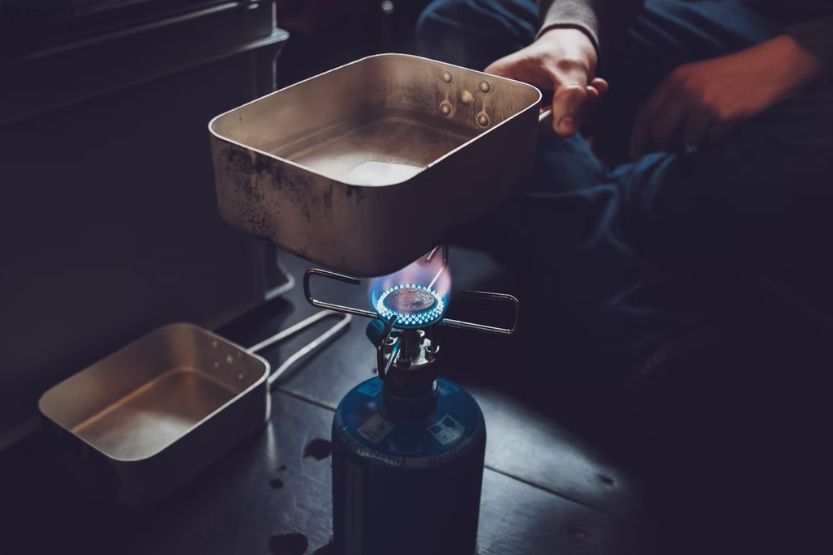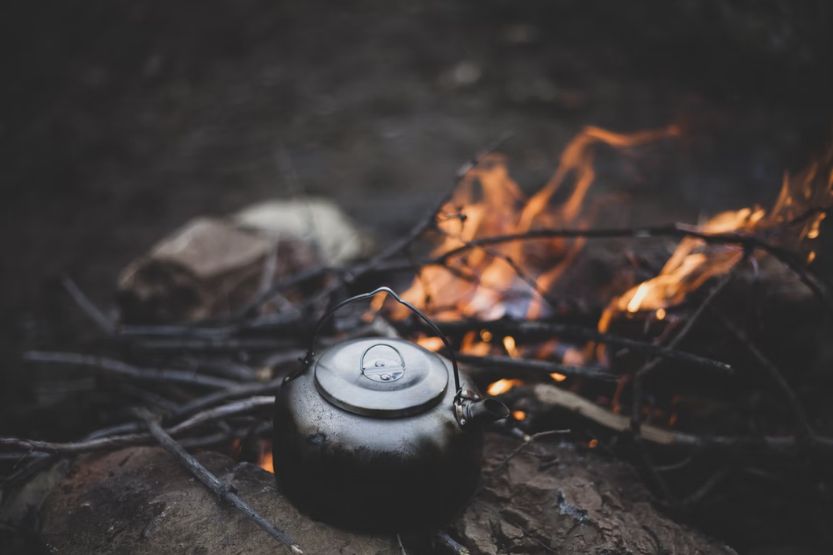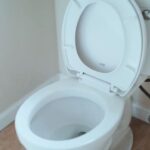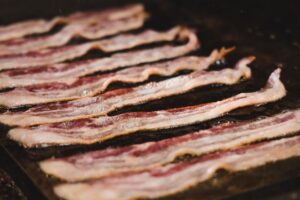This is a popular question, and you’ve probably heard a lot of different answers. Some say water boils faster with a lid, while others swear it takes longer. So what’s the real answer?
Water boils faster with a lid. When there’s no lid on the pot, heat escapes from the top of the liquid, which cools down the water below it. It also causes some steam bubbles to slow down and turn into liquid drops, slowing down or stopping the boiling process altogether.
Lids keep heat in and prevent this cooling effect from occurring. So if you want your water to boil faster, put a lid on it.
Read on to learn more about how lids affect boiling water and how to use this knowledge to your advantage.
How to Make Water Boil Faster

Boiling water is one of the most common tasks in the kitchen. It’s also a task that takes some time to complete, especially when preparing dinner for a large family. Because boiling water is a common task, getting it done quickly means you have more time for other activities.
Here are four tips to help speed up the process:
1. Use a Wider and Shallower Pot Instead of a Narrower and Taller One
The wider surface area of the pan allows it to heat up more quickly. If you don’t have any pots available, try using an electric kettle instead. This can help speed things along by heating water faster than a stovetop.
2. Use Hot Tap Water
Another way to make boiling water faster is using hot tap water instead of cold. Hot water will heat up quicker than cold, so this can be a big time-saver!
If you don’t have any hot water available, try running the faucet for a minute or two before starting to boil the pot. This will help pre-heat the water and get it closer to its boiling point.
3. Boil Enough Water for What You Need
Another way to make boiling water quicker is by only using as much as you need. The more water you have in the pot, the longer it will take to come to a boil.
So if you’re looking to fill up a cup or two, don’t bother filling up an entire pot! Just use enough water for what you need and then some extra in case it evaporates while boiling:
Tea
If you’re making tea for one person, only put enough water in the kettle for one cup.
Eggs
When boiling eggs, only put enough water to cover them completely, plus an extra inch.
Potatoes and Other Vegetables
For potatoes or other veggies, fill the pot with an inch or two of water instead of covering them completely. Also, many vegetables taste better when steamed with an inch or two of water in the pan than when boiled with enough water to cover them completely.
4. Cover the Pot with a Lid
This one is pretty simple. If you want water to boil faster, put a lid on it. I’ve tried it! Using lids will trap the heat inside the pot and make the water boil quicker. It’s also important not to lift the lid too often while boiling, letting heat escape and slowing down the process.
Water boils faster when certain techniques are used. This can be important because people often need hot water quickly — whether they are making tea, coffee, instant noodles, etc. If someone can save even a minute by using one of these methods, that could be beneficial over time.
Should You Boil Water with the Lid on or Off
When you boil water, should you keep the lid on or off? You can leave the lid on or take it off, depending on your intention for the water.
Lid on vs. Lid Off
Want to boil water quickly? It’s better to keep the lid on. However, if you want the water to cool down quickly after boiling, it is better to take the lid off.
If you leave the lid on, it will trap steam inside, and make sure that your water boils faster. If you take the lid off, steam will escape through the pot’s opening, so you’ll have to wait a long time for the water to boil.
Leave the Lid On for Faster Boiling
Leaving the lid on is better if you want your water to boil faster. This also has implications for cooking in general. If you’re trying to cook something quickly, it’s often better to cover it so that heat doesn’t escape.
Boiling Water Myth and Facts

There’s a lot of misinformation about boiling water out there. Here are some common myths and facts to help clear things up:
Myth
1. Add Salt to Boil Water Faster
There’s a widespread misconception that adding salt to water will make it boil faster. In reality, the opposite is true. Salted water has a higher boiling point than unseasoned water.
However, this only applies to significantly salty water. There won’t be any difference in the boiling point of your pasta water by adding a sprinkle of Kosher salt.
This is because the salt needs to be dissolved in the water to affect the boiling point. That said, even if you cannot make your pasta water boil any faster by adding salt, it’s still important to season your water before cooking, as this will help improve the flavor of your pasta and sauce.
2. Cold Water Boils More Quickly Than Hot Water
This myth has been around for ages. However, it’s simply not true. The water must heat at 212°F, no matter the starting point. It won’t heat faster if it is colder.
This may seem counterintuitive, but it is just the way it works. So, next time you wait for your water to boil, don’t add cold water, thinking it will speed up the process. It won’t!
3. Baking Soda Will Speed Up the Process of Water Boiling
Adding baking soda to the water won’t make it boil faster, no matter how much you add or how long you wait.
This myth has persisted for so long because it’s based on an observed phenomenon: when you add baking soda to water, the pH level of the water increases.
This means that water becomes more basic. And yes, if you want to clean your chicken with baking soda, it can increase its effectiveness as a cleaning agent when its pH level increases.
So if you have been putting this tip into practice over the years, you can stop doing it now.
Again, does water boil faster with a lid? Water boils faster if you put a lid on your boiler. Water must reach 212°F (100°C) to boil, so when covered, it reaches said temperature faster.
Facts
1. Water Will Boil More Quickly in Elevated Areas
Elevated areas have lower air pressure. And the lower the air pressure, the faster the water will boil. Also, the faster the water molecules move, the faster they will rise to the surface and turn into steam.
The higher you go, the greater the difference in air pressure, and the more pronounced this effect becomes. Therefore, if you’re ever in a hurry to boil water, head for the hills!
2. Keeping the Lid on Boils Water Faster
Covering the pot is a great tip to speed up the boiling process. The air in the pot heats up as the water heats up, and then it circulates back into the water as it’s heated. So, when you cover the pot, you’re forcing that heat to stay in the pot. This heat makes the water boil faster.
3. Use Less Water in the Pot
Many people think they should use more water in the pot to boil water faster. However, this is not the case. Using less water will help the water to boil faster.
So, if you are boiling a small amount of pasta or eggs, use a smaller saucepan. This way, you can save the big pot for later use.
4. Hot Water Boils More Quickly
The water will heat faster if it starts higher. So if you’re in a hurry, turn your tap to the hottest setting and fill your pot with hot tap water. This helps reach the boiling point faster than lukewarm or cold water.
Also, you can get the water even hotter by using a kettle. Start the process by bringing water much closer to the boiling point than your tap water will get. When you add the correct amount of cold water, it’ll already be at or near the boiling point, so it’ll only take a minute or two to come to a boil.
5. Thinner Water Levels Boil Faster
When you need to boil water again, think thin. The thinner the water level, the faster it will boil. That’s because the greater surface area exposes more water to the pot’s bottom, considered the pot’s hottest part.
You cannot boil a lot of food in a wide, shallow pool of water, so follow this tip when boiling raw veggies, such as asparagus, carrots, and broccoli, including eggs and chicken breast.
By following this tip, you’ll not only save time, but you’ll also conserve energy. Try it next time you need to boil water. You might be surprised at how quickly it comes to a rolling boil.
Frequently Asked Questions – Does a Lid Make Water Boil Faster?

Do Lids Make Water Boil Faster?
Yes, lids do make water boil faster. Putting a lid on the pot and turning the heat is like creating a pressure cooker. The lid creates a seal, which means the steam cannot escape.
So, any steam that forms goes back into the water. And when water is heated up under pressure (like in a pressure cooker), it boils at a higher temperature than normal.
Why Does Water Boil Faster in a Closed Container?
When you heat a pot of water and then seal it off, the heat energy inside the pot has nowhere to go but into the water. The pressure rises so the water won’t boil at the usual boiling point. Instead, it will boil at a higher temperature.
Do You Put a Lid on Boiling Pasta?
Placing a lid on top of a pot while waiting for water to boil is fine, but it should be removed after adding noodles. Otherwise, any bubbles that form will spill over and make an uncontrollable mess.
How Many Minutes Do You Boil Water?
One minute. Major health organizations, including the CDC, strongly advise boiling water for one minute up to an elevation of 2,000 meters or 6,562 ft. and three minutes above that.
Does Adding Salt Make Water Boil Faster?
By adding salt to the water, you can alter its physical properties, including the following:
- Increasing its boiling point,
- Decreasing the specific heat.
These two changes contradict each other. The water will boil more slowly if the boiling point is raised.
Conclusion – Does Having a Lid Make Water Boil Faster?
So, does a lid make water boil faster? Yes, it can. But it doesn’t perfectly guarantee getting your water to boil quickly. A few other factors can affect how long it takes for your water to boil, including:
- Elevation of an area;
- The pot’s shape and size;
- The water’s temperature; and
- Amount of water.
These factors tend to influence how long it takes for the water to reach 212°F or 100°C. The type of stove you’re using can also affect boiling time.
So, if you want to get your water boiling as quickly as possible, pay attention to all the factors that impact boiling time. And don’t forget: a lid can help!
Read next:






![Hot Water Heater Is Only Lukewarm [Causes and How to Fix] hot water heater only lukewarm](https://homecarezen.com/wp-content/uploads/2021/04/hot-water-heater-only-lukewarm-150x150.jpg)

![Read more about the article Traditional Vegetables in Japanese Curry [Plus Recipe]](https://homecarezen.com/wp-content/uploads/2022/07/traditional-vegetables-in-Japanese-curry-300x200.jpg)